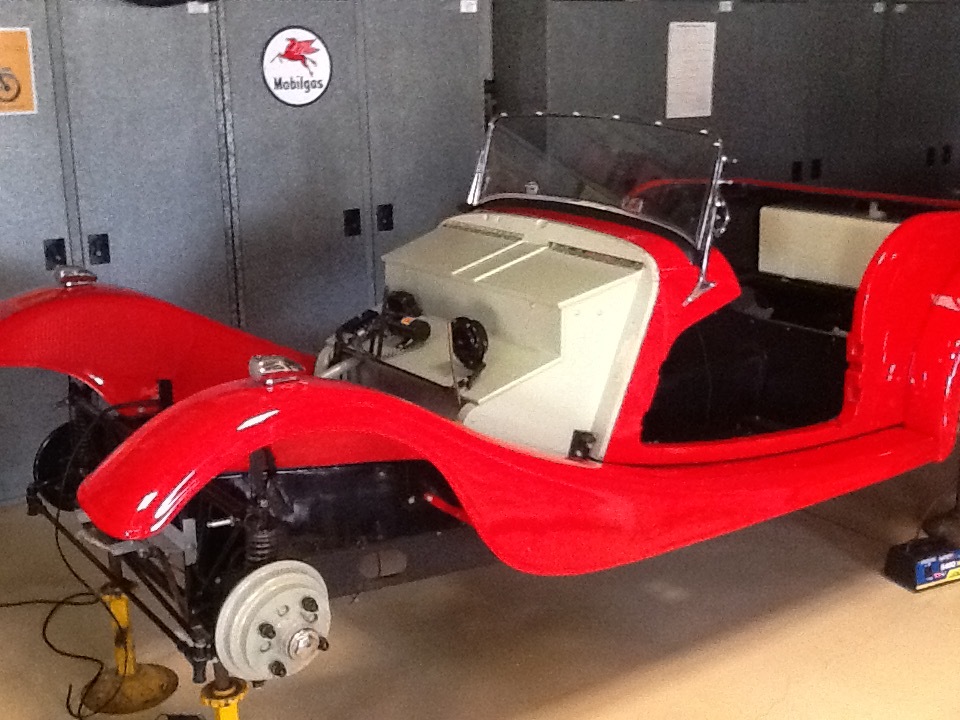Ongoing Restoration of a
1937 4/4 MORGAN
by Rex Vincent
Picture 1 shows that we are at last painted after 6 years of ‘total everything apart restoration’ but it wasn’t meant to be as hard as this.
This very early 4 wheel Morgan (only 3 wheels till 1936) was my first car purchased in 1957. It has a Coventry Climax engine similar to those found in Triumph Gloria’s, some 1122 cc and will do over 70 mph.
I moved it on for a 4-seater version in 1960, then foolishly for nostalgic reasons about 10 years ago, bought the thing back from a deceased estate where it had languished in a shed for over 30 years.
It was meant to be almost drive able but that was all a myth.
One should always listen to your wife. When the sad old pile of half assembled bits turned up on the flat bed, Norah took one look and said “ It’s far too small so why not do yourself a favour and send him on to the tip, then go out and buy yourself a real one.”
Being a husband that takes advice I kept the wreck and also went and bought another one to use during the rebuild phase.
After having replaced some wood work, which required removal of lots of little nails to get the metal skins off and finally having a new floor in the straitened and refurbished chassis I decided to pop in the old seats and see how it all felt,
You guessed it. Help! I don’t bloody fit.
There I was with the nice new steering wheel hard up against my chest and there seemed no room to move my legs to push the clutch etc, I fitted OK when 17 but an old school friend has reminded me that as he has always been a big guy he was never able to drive it back then.
Car Clubs usually have members who have sorted out common problems and the Morgan guys have come up with the cure. One shrinks the rear luggage space and reduces the seat back by half then even taller people can fit.
Picture 2 shows the new rear panel.
Picture 3 shows the fuel pump relocated down the back to avoid vaporisation ( if left up on the engine).
Picture 4 shows the plywood scuttle with tool boxes.
The old story that Morgans have a wood chassis is of course nonsense. They mostly have a simple “Z” section profile of riveted and welded steel. On the top of this are the wood frame bearers that the wooden frame is glued and screwed to. It can and does twist so over time things wear, but this construction is typical of all vintage coach-built bodies.
Rex Vincent (Note; A version of this story has appeared in the Morgan Club magazine)




